Hydrangea in Siberia and in other regions with a harsh climate
In places with long frosty winters and short summers, few plants with a long and abundant flowering period are grown. But the inhabitants of these harsh places fell in love with the hydrangea. In terms of its decorative characteristics, luxurious hydrangea surpasses many well-known types of flowers and shrubs and therefore serves as an excellent decoration for a garden, gazebo or alley.
Content:
- And in Siberia, you can create a beautiful garden
- How hydrangea reproduces
- Watering and feeding hydrangeas
- Features of hydrangea pruning
- How to winter hydrangeas without loss
And in Siberia, you can create a beautiful garden
By it's nature hydrangea unpretentious and easily adapts to different conditions. But it is very difficult to grow hydrangea in Siberia or in other areas with harsh climatic conditions. The delicate plant is exposed to low temperatures and dies from this. Winter temperatures in Siberia often drop to -45 degrees, and many varieties of hydrangeas, such as large-flowered, oak-leaved, garden and petiolate, simply freeze out without waiting for spring. Recommendations for growing hydrangeas developed by gardeners are most often unacceptable for a specific Siberian climate.
But experienced flower growers still grow hydrangea in the difficult climatic conditions of Siberia and the Urals. They prefer more frost-resistant plant varieties. These include paniculate and tree-like hydrangea varieties.
Growing hydrangeas in Siberian conditions requires special skills, knowledge and proper care of the plant, as in such a climate it becomes "capricious".
How hydrangea reproduces
Hydrangea can be propagated by cuttings and layering, but the desired flowering will have to wait 4-5 years. The easiest way to plant a hydrangea saplings, which should definitely be bought with an adjoining lump of earth. So she can avoid the stress of disembarkation and take root faster. It is necessary to plant a hydrangea in late spring or early autumn, when the ground is warmed up.
A pit 50x50 cm is prepared for the plant, the soil is well fertilized. The seedling is placed in a hole and sprinkled with a mixture of black soil, humus, peat and sand. Inexperienced gardeners should take into account that hydrangea does not like ash and lime.
Hydrangea does not tolerate direct sunlight and is afraid of the wind. Therefore, it is better for her to allocate a calm place in the garden with moderate lighting or even good shade.
Plants should be planted at a distance of 1.5 meters from each other and away from large trees, which will absorb a significant amount of moisture with their roots. The near-root part must be constantly loosened so that sufficient oxygen flows to the roots of the plant. If there is not enough time for loosening for some reason, you can add mulch to the soil during the first treatment.
Watering and feeding hydrangeas
Hydrangea is a very moisture-loving plant and therefore needs good organized watering and constant spraying of the leaves. With a lack of moisture, the hydrangea will freeze out. In regions of Siberia, summer is often dry, especially in the middle of summer, the sun is very active. During this period, hydrangea must be watered every day, preventing the earth from drying out.
At the beginning of growth for feeding hydrangeas use mineral fertilizers or humus. Over time, nitrogen fertilizers can be added.In specialized stores on sale there are ready-made mixtures intended for fertilizing hydrangeas.
2-3 feeding per month is enough for the plant to thank with large beautiful inflorescences.
Features of hydrangea pruning
To grow a flowering bush in early spring or mid-autumn, pruning should be done. This should be done only when the plant reaches 3-4 years of age. Previously, this should not be done, since the plant has abundant sap flow in the early years of life.
In order to improve the appearance of the bush and enhance flowering, it is necessary to cut the tops (about 10 cm) of the branches. If you cut two buds below the old inflorescence, there will be more flowers, but smaller. If you cut at the bottom and leave only two buds, the flowers will be larger, but in smaller quantities.
Hydrangea tends to grow rapidly and form heavy inflorescences. To prevent branch fractures, the largest bushes need to be tied up or propped up in advance.
How to winter hydrangeas without loss
For the winter, the plants are carefully covered, since without special shelter, flower buds can freeze out and in the new season, flowering will be scarce. For this, agrofibre and a wooden box are used. The branches of the hydrangea are bent down and laid on a wooden box, covered with agrofibre on top and covered with spruce branches. The root part is covered with dry foliage. In this state, the plant will be able to winter safely and wait for spring.
There is also a good way to protect the plant from the winter cold. To do this, the bush is tied, covered with spunbond. At a distance of 20-25 cm from the bush, a wire frame is installed, in height exceeding the plant by 10-15 cm. The space between the frame and the bush is covered with fallen leaves. Under such a "fur coat" the hydrangea will feel good even in severe Siberian frosts.



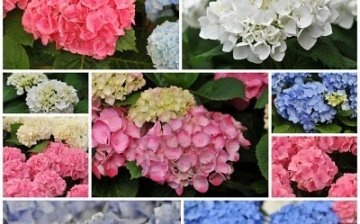
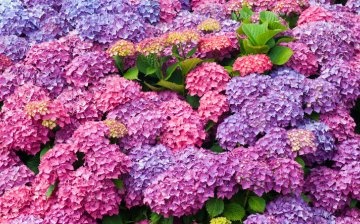
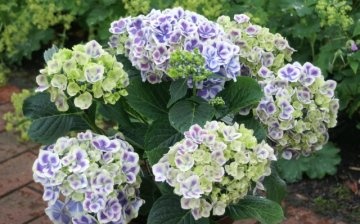
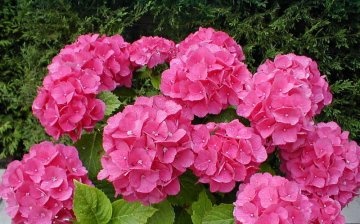




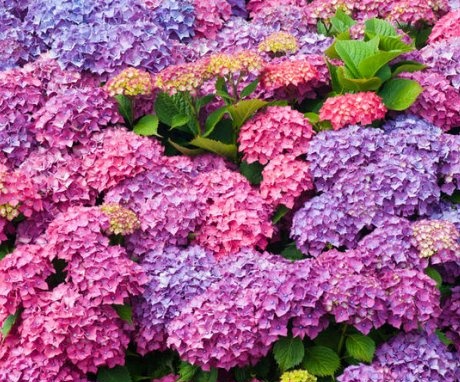

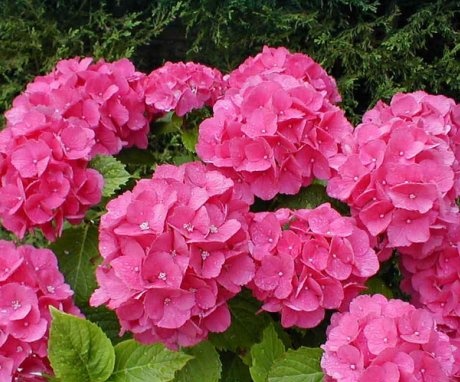
Tell me, is hydrangea grown at home, or is it just a garden plant? It seemed to me that the indoor flower also exists.